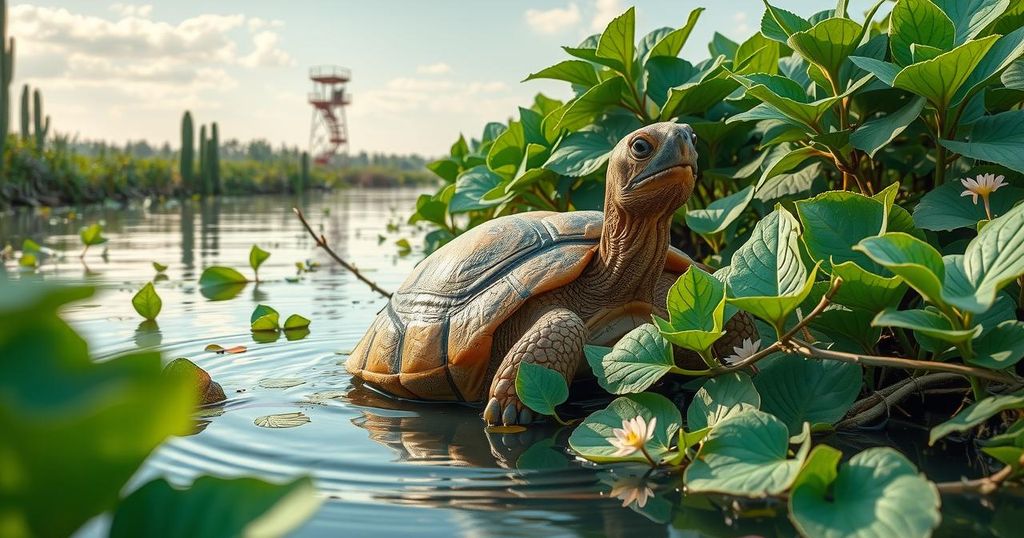Community Unites to Rescue Endangered Tortoises in Madagascar Floods

In Madagascar, community members rescued over 10,000 endangered tortoises from floods caused by a tropical cyclone. Despite successful recovery efforts, around 700 tortoises perished due to entrapment in debris. The Lavavolo Tortoise Center faces infrastructure challenges post-flood, emphasizing the ongoing threats to the critically endangered species.
In southern Madagascar, community members, sanctuary staff, and police collaborated to rescue over 10,000 critically endangered tortoises from a flooded sanctuary due to a tropical cyclone. Rescuers used containers and makeshift rafts from damaged buildings to assist the tortoises in their retrieval efforts, demonstrating community resilience in the face of natural disaster. Although many tortoises were saved, approximately 700 were lost, trapped by debris in the floodwaters, highlighting the challenges of such rescue operations.
Hery Razafimamonjiraibe, director of the Turtle Survival Alliance in Madagascar, reported that rescuing tortoises is no simple task, given their unpredictable mobility. Despite this, he remains hopeful about the numbers recovered. After the flood, the sanctuary faced significant infrastructure losses, raising concerns about its future operations, particularly after undergoing substantial renovations in 2018 to accommodate confiscated tortoises.
The Lavavolo Tortoise Center houses mainly radiated tortoises, an endangered species native to Madagascar and nearby islands. These tortoises grow to around 30 centimeters (11.8 inches) and can live more than 100 years. Historically, they thrived in the wild but have suffered drastic population declines due to habitat loss and illegal poaching, further exacerbated by the recent flood damage to the sanctuary.
The Lavavolo Tortoise Center plays a critical role in the conservation of radiated and spider tortoises, both of which are critically endangered. These tortoises face severe threats from habitat destruction, poaching for meat, and illegal trafficking for the pet trade due to their distinctive shell patterns. Historically, tens of millions of radiated tortoises populated Madagascar but have lost much of their habitat, with a significant decline in numbers since then, leading to urgent conservation efforts.
The recent flooding in Madagascar underscored the vulnerability of critically endangered tortoises, attracting community support for rescue efforts. While many tortoises were saved, significant challenges remain for their habitat and future conservation. The Lavavolo Tortoise Center must address infrastructure rebuilding and ongoing threats to tortoise populations amidst these environmental challenges.
Original Source: www.washingtonpost.com







